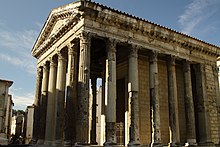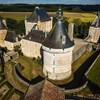







































































Bonnes, Vienne, France
Agent: Cliff Jacobs - Managing Principal Estate Agent & CEO (Nat.Dpl.Hotel Man (UJ). M.P.R.E.)
Agent Cellphone: +27 (0) 84 413 1071 / +27 (0) 61 716 6951
Agent Office Number: +27 (0) 84 413 1071
Agent Email Address: cliff@exquisitehotelconsultants.com
Type: Château / Castle
Bedrooms: 25
Bathrooms: 24
Showers: 24
Parking: 70
Yield: Not Disclosed
TGCSA Rating:

The Château is a castle, converted into a château, in the commune of Bonnes 18 km east of Poitiers, 3 km north of Chauvigny in the Vienne department and on a long tall bank of the River Vienne, France.
History
The château was constructed over several centuries. The Medieval Wing includes Romanesque and gothic elements (the keep). The east half dates back to the 12th century while the west half was constructed in the early 15th century. The Renaissance Wing was added during the 16th century by the Chasteigner family. The main difference between these two epochs in castle construction is that in the Middle Ages, a castle was built for defense. In the Renaissance however, a château was a home for nobles. Rather than defense and protection, the castle dwellers in the Renaissance strived for classy, fashionable residences.
Today, the Medieval Wing is used to accommodate large business meetings and seminars, and the Renaissance Wing is the private residence of the château owner.

The château has been privately owned throughout its existence. It passed from the Oger family (1127-1280) to the Montléon family (1280-1519) and eventually to the Chasteigner family (1519-1821). Jean Chasteigner III, a Chamberlain to Francis I, oversaw most of the château's renovation in the early Renaissance.
Once the Chasteigners sold the château, Touffou changed hands several times, finally being purchased in 1966 by David Ogilvy from the "de Vergie family". The château is still owned by the Ogilvy family, even after David's death in 1999.
In 1923 the château was recognized as a monument historique, and in 2004 its gardens were classified as among the Notable Gardens of France by the French Ministry of Culture.
Hunting Museum
The Chambre François 1er (Francis I Bedroom) is named after the occasion when King Francis I supposedly visited Touffou. The château also has a Hunting Museum documenting the castle's hunting history and its impressive collection of over 1,500 hunting buttons – among the largest collections in France.
Vienne
Vienne is a town in southeastern France, located 35 kilometres (22 mi) south of Lyon, at the confluence of the Gère and the Rhône. It is the fourth largest-commune in the Isère department, of which it is a subprefecture alongside La Tour-du-Pin. Vienne was a major centre of the Roman Empire under the Latin name Vienna.
Before the arrival of the Roman armies, Vienne was the capital of the Allobroges, a Gallic people. Transformed into a Roman colony in 47 BC under Julius Caesar, Vienne became a major urban centre, ideally located along the Rhône, then a major axis of communication. Emperor Augustus banished Herod the Great's son, the ethnarch Herod Archelaus to Vienne in 6 AD.
The town became a Roman provincial capital and remains of Roman constructions are widespread across modern Vienne. It was also an important early bishopric in Christian Gaul. Its most famous bishop was Avitus of Vienne. At the Council of Vienne, which was convened there in October 1311, Pope Clement V abolished the order of the Knights Templar. During the Middle Ages, Vienne was part of the Kingdom of Provence, dependent on the Holy Roman Empire, and the opposite bank of the Rhône was French territory, which made it a strategic position.
The town is now a regional commercial and industrial centre, known regionally for its Saturday market. A Roman temple, circus pyramid and theatre (where the annual Jazz à Vienne is held), as well as museums (archaeological, textile industry) and notable Catholic buildings, make tourism an important part of the town's economy.
History
Roman Vienne

The oppidum of the Allobroges became a Roman colony about 47 BC under Julius Caesar, but the Allobroges managed to expel the Romans; the exiles then founded the colony of Lugdunum (today's Lyon). Ethnarch of Judea Herod Archelaus was exiled here in 6 AD. During the early Empire, Vienna (as the Romans called it—not to be confused with today's Vienna, then known as Vindobona) regained all its former privileges as a Roman colony. In 260 Postumus was proclaimed Emperor here of a short-lived Gallo-Roman Empire. Later it became a provincial capital of the Dioecesis Viennensis.
Vienne became the seat of the vicar of prefects after the creation of regional dioceses, of which the date is still controversial. Regional dioceses were created during the First Tetrarchy, 293–305, or possibly later as some recent studies suggest in 313, but no later than the Verona List, which is securely dated to June 314.
On the bank of the Gère are traces of the ramparts of the old Roman city, and on Mont Pipet (east of the town) are the remains of a Roman theatre, while the ruined thirteenth-century castle there was built on Roman footings. Several ancient aqueducts and traces of Roman roads can still be seen.
Two important Roman monuments still stand at Vienne. One is the Early Imperial Temple of Augustus and Livia, a rectangular peripteral building of the Corinthian order, erected by the emperor Claudius, which owes its survival, like the Maison Carrée at Nîmes, to being converted to a church soon after the Theodosian decrees and later rededicated as "Notre Dame de Vie." During the Revolutionary Reign of Terror it was used for the local Festival of Reason. The other is the Plan de l'Aiguille, a truncated pyramid resting on a portico with four arches, from the Roman circus. Legends from the 13th century mention Pontius Pilate's death in Vienne. Later legends held that the pyramid was either the tomb of Herod Archelaus or of Pontius Pilate.
The vestiges of a temple to Cybèle were discovered in 1945 when a new hospital was built on Mount Salomon and the Ancien Hôpital in the center of town was torn down. Subsequent archaeological research conducted in 1965 permitted detailed reconstruction of the floor plan for the temple as well as the surrounding forum and established that the temple was constructed in the first century AD.
The provincial capital was an important early seat of a bishop and the legendary first bishop said to have been Crescens, a disciple of Paul. There were Christians here in 177 when the churches of Vienne and Lyon addressed a letter to those of Asia and Phrygia, and mention is made of the deacon of Vienne (Eusebius of Caesarea, Church History). The first historical bishop was Verus, who was present at the Council of Arles (314). About 450, Vienne's bishops became archbishops, several of whom played an important cultural role, e.g. Mamertus, who established Rogation pilgrimages, and the poet, Avitus (498-518). Vienne's archbishops and those of Lyon disputed the title of "Primate of All the Gauls" based on the dates of founding of the cities compared to the dates of founding of the bishoprics. Vienne's archbishopric was suppressed in 1790 during the Revolution and officially terminated 11 years later by the Concordat of 1801.
Burgundian Vienne
Vienne was a target during the Migration Period: it was taken by the Kingdom of the Burgundians in 438, but re-taken by the Romans and held until 461. In 534 the Merovingian-led Franks captured Vienne. It was then sacked by the Lombards in 558, and later by the Moors in 737. When Francia's king divided Frankish Burgundia into three parts in 843 by the Treaty of Verdun, Vienne became part of Middle Francia.
In the Kingdom of Provence
King Charles II the Bald assigned the Viennois district in 869 to Comte Boso of Provence, who in 879 proclaimed himself king of Provence and on his death in 887 was buried at Vienne in the cathedral church of St. Maurice. Vienne then continued as capital of the Dauphiné Vienne of the Kingdom of Provence, from 882 of the Kingdom of West Francia and from 933 of the Kingdom of Burgundy until in 1032, when it reverted to the Holy Roman Empire, but the real rulers were the archbishops of Vienne. Their rights were repeatedly recognized, but they had serious local rivals in the counts of Albon, and later Dauphins of the surrounding countship of the Viennois. In 1349, the reigning Dauphin sold his rights to the Dauphiné to France, but the archbishop stood firm and Vienne was not included in this sale. The archbishops finally surrendered their territorial powers to France in 1449. Gui de Bourgogne, who was archbishop 1090–1119, was pope from 1119 to 1124 as Callixtus II.
The Council of Vienne was the fifteenth Ecumenical Council of the Roman Catholic Church that met between 1311 and 1312 in Vienne. Its principal act was to withdraw papal support for the Knights Templar on the instigation of Philip IV of France.
France
The archbishops did not give up their rights over it to France till 1449, when it first became French. Vienne was sacked in 1562 by the Protestants under the baron des Adrets, and was held for the Ligue 1590–95, when it was taken in the name of Henri IV by Montmorency. The fortifications were demolished between 1589 and 1636.
Train stations were built in Vienne in 1855 and in Estressin in 1875 providing freight transport to the textile and metallurgy industries, which had begun taking advantage of the water power in the valley of the river Gère in the previous centuries.
About Us
Built in the 12th century by the Oger family, this castle evolved for six centuries under the same family of owners (Oger, Mauléon, Chasteigner de La Rocheposay).
The castle was sequestered for 10 years during the Revolution and then sold several times in the 19th century, until it was acquired by the Vergie family in 1897 , then by the advertiser David Ogilv in 1966.
With resilience and notoriety, the castle
Remarkable Gardens
The park is a wooded area traversed by paths.
The gardens created since 1966 by the Ogilvy family have had the “Remarkable Gardens” label since 2004.
"Remarkable Garden" is a label created in 2004 by the Ministry of Culture.
The Ogilvy family
He continued to animate his teams and wrote his last books there: "Blood Brains and Beer", "The confessions of an advertiser", "Advertising according to Ogilvy".
Mrs. Ogilvy, his wife continued to host Ogilvy's seminars as well as those of the WPP Group companies.
The imposing defensive castle from the Middle Ages reveals inside and out six centuries of architecture.
François I was received there with the court during his visit in June 1541 to Chatellerault.
The room where he slept has magnificent murals and is part of the tour circuit.
Practical information
During your visit, free or guided, you will discover the François 1 room whose vault is decorated with Renaissance frescoes, the Tour de la Chapelle with its justice room and its dungeons in the basement and the Tour de l'Hôtellerie with its 16th century bakery.
Also discover the hunting museum illustrating the hunting tradition of the early 20th century, installed in the stables and included in the guided tour.
Then enjoy freely the contemporary gardens made on the 3 ha on either side of the moat, and the undergrowth of the castle.
Fast facts













































Cliff Jacobs (Nat Dpl Hotel Man (UJ). MPRE. GA Level 5 TEFL) Managing Principal / CEO Exquisite Hotel Consultants (Pty) Ltd Mobile: +27 (0) 67 587 2532 (voice calls) Mobile: +27 (0) 84 413 1071 (WhatsApp voice calls and chats only) / +27 (0) 61 716 6951 (WhatsApp voice calls and chats only) Email: cliff@exquisitehotelconsultants.com Web: https://www.exquisitehotelconsultants.com © All rights reserved Terms and Conditions apply Scroll down to view our Hospitality Properties and Businesses for sale or lease or lease-to-buy or partnership arrangement or management agreement arrangement.